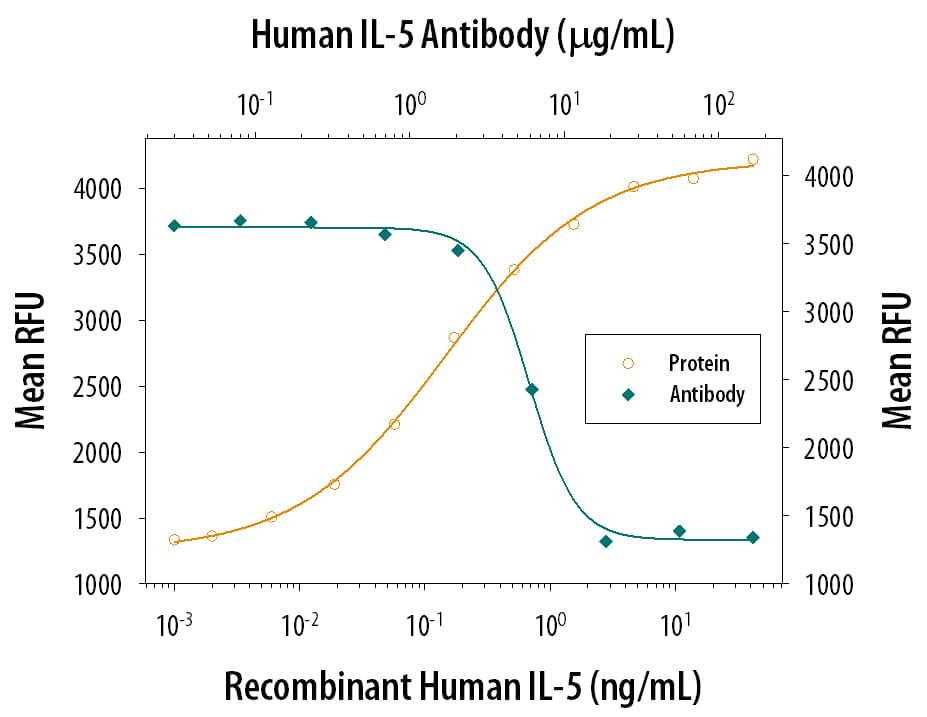Human IL-5 Antibody
Bio-Techne includes R&D Systems | Catalog # AB-205-NA

Key Product Details
Species Reactivity
Validated:
Applications
Validated:
Cited:
Label
Antibody Source
Product Summary for Human IL-5 Antibody
Immunogen
Ile20-Ser134
Accession # P05113
Specificity
Clonality
Host
Isotype
Scientific Data Images for Human IL-5 Antibody
Cell Proliferation Induced by IL‑5 and Neutralization by Human IL‑5 Antibody.
Recombinant Human IL-5 (Catalog # 205-IL) stimulates proliferation in the TF-1 human erythroleukemic cell line in a dose-dependent manner (orange line). Proliferation elicited by Recombinant Human IL-5 (1.25 ng/mL) is neutralized (green line) by increasing concentrations of Goat Anti-Human IL-5 Polyclonal Antibody (Catalog # AB-205-NA). The ND50 is typically 8-10 µg/mL.Applications for Human IL-5 Antibody
Western Blot
Sample: Recombinant Human IL-5 (Catalog # 205-IL)
Neutralization
Formulation, Preparation, and Storage
Purification
Endotoxin Level
Reconstitution
Formulation
Shipping
Stability & Storage
- 12 months from date of receipt, -20 to -70 °C as supplied.
- 1 month, 2 to 8 °C under sterile conditions after reconstitution.
- 6 months, -20 to -70 °C under sterile conditions after reconstitution.
Background: IL-5
Interleukin 5 is a T cell-derived factor that promotes the proliferation, differentiation and activation of eosinophils. In mice, IL-5 has also been shown to be a growth and differentiation factor for B cells. Various names previously used to describe IL-5 include: T cell replacing factor (TRF), B cell growth factor II (BCGFII), B cell differentiation factor μ (BCDF μ), eosinophil differentiation factor (EDF) and eosinophil colony-stimulating factor (Eo-CSF). Biologically active IL-5 is a disulfide-linked homodimer. The cDNAs for murine and human IL-5 encode precursor proteins with signal peptides that are cleaved to form mature proteins containing 113 and 115 amino acid residues, respectively. Murine and human IL-5 are 70% identical in their amino acid sequences and show species cross‑reactivity. The genes for human and mouse IL-5 have been mapped to chromosome 5 and chromosome 11, respectively; closely linked to the genes for IL-3, IL-4 and GM-CSF.
IL-5 exerts its activity on target cells by binding to specific cell surface receptors. The functional high‑affinity receptor for human IL-5 has been shown to be composed of a low-affinity IL-5 binding alpha-subunit and a non-binding common beta-subunit that is shared with the high‑affinity receptors for GM‑CSF and IL-3.
Long Name
Alternate Names
Entrez Gene IDs
Gene Symbol
UniProt
Additional IL-5 Products
Product Documents for Human IL-5 Antibody
Product Specific Notices for Human IL-5 Antibody
For research use only